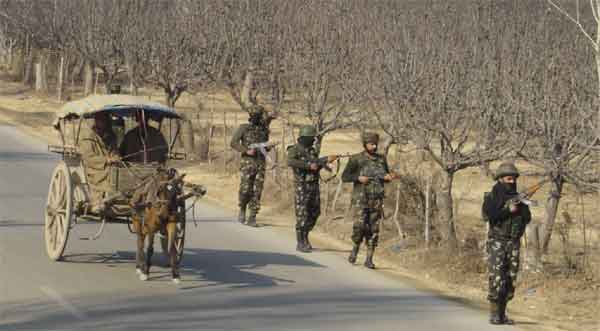The political co-habitation between BJP and PDP in J&K has come to an end. There is no dearth of the inevitable ‘I told you so’ experts who claim that they had predicted it long ago. Equally, there are those who claim that they had the prescience to know of its failure from day one. However, in dealing with the vexed and long-festering problem in the State, which has defied solution for all these years, choosing a new direction was a bold and correct decision. As such, the experiment of the Party at the helm at the Centre, sharing power with a regional political outfit that had won the highest number of seats in the assembly elections, was a pragmatic decision. That the experiment failed, is no reason that it should not have been tried.
The question now is what next? It has been suggested that the security forces must go ‘all out’ to hunt down the 200-odd terrorists reportedly present in the Valley. True that. But it ignores the fact that when – and if – the SF are able to do so, there is no denying that more will trickle in from across the border, following the same methodology that these 200 have done. The supply line is unending.
Another view is that the Hurriyat leaders being the real source of the problem, and a conduit for the inflow of funds and other wherewithal for the terrorists, must be imprisoned. This fetches a cautionary call by some. It is argued by the soft pedal group that the present Hurriyat leaders are soft, and if they are taken away, a more hard-line leadership is likely to take over. However, this apprehension is unfounded. Among the terrorists or their supporters, there is nothing known as a soft or hard category. Their mindset is all the same, working against the interests of the country. Since money link of the present Hurriyat leaders with their mentors or handlers in Pakistan has already been established, they must be incarcerated without delay, and must be kept away from circulation in the State. The reality of their active involvement in fuelling unrest cannot be overlooked on a mere apprehension that their successors would tow an even harder line.
In the aftermath of sudden political developments, the flow of debate lost sight of the real issue. Killing terrorists in not synonymous with finishing terrorism. More will keep coming despite our best efforts to check their infiltration. For indoctrinated militants, who are determined to kill and are prepared to die, no security system can ever be fool-proof. Countering terrorism is akin to tackling the menace of malaria. Swatting mosquitoes in not the solution; their source of breeding has to be neutralised. That brings us to the basic question. We have to deter Pakistan from sending terrorists and from perpetrating violence in the Valley.
Taming Pakistan is not as simple as saying that we need to do so. War, though never totally ruled out, does not appear a feasible option. If it were so, we would have launched a war, after they attacked our Parliament in 2001 and the entire Army was operationally deployed along the western borders. We had another chance in 2008 when the Pakistan-based LeT terrorists attacked Mumbai and killed 164 people. Even earlier, during Kargil operations, we had an opportunity and full justification to enlarge the scope of war and open the plains front, more so since the entire international community was agreed that Pakistan was the aggressor. However, apparently there were strong reasons why India did not go to war despite these grave provocations. It is obvious that war between two nuclear-armed countries is an unlikely, even if not unthinkable, proposition.
What then can India do to deter Pakistan from meddling into Kashmir through use of the proxy war? It has to be a combination of military and no-military means. Diplomatic isolation of Pakistan, already achieved to a considerable extent, needs to be further pushed. The fact that Pakistan has already been recognised by most of the world as a breeding ground of terrorism, and the fact that whole world today in concerned about this scourge, should help in our efforts to have them labelled a country that sponsors terrorism. Sanctions should automatically follow.
We should also seriously consider use of river waters as a weapon. Pakistan economy has a heavy dependence on agriculture which in turn relies on river water for irrigation. Since all the six rivers flowing into Pakistan pass through India, with five actually originating from the Indian soil, we are placed in a favourable position to control their flow. Admittedly, it is a time consuming process, also requiring massive funds. It cannot be done in a hurry. But a beginning needs to be made.
On the military side, we had already carried out a surgical strike in 2016. While being good in itself, it was more aimed at the psychological level. It failed in deterring Pakistan from indulging in terror attacks. While carrying out operations against the terrorists in the Valley, we need to simultaneously ‘heat up’ the LoC all along its length. Pakistan in any case continues to blame India for violating the ceasefire; we may as well do so, including through use of heavier weapons. With our larger capacity for carrying out sustained artillery fire, we should be able to tire Pakistan out, a la 2003.
Governor’s rule in the J&K in not a panacea for resolving the J&K problem. In view of the prevailing environment, we have a long haul before we can do a high-five.






thanks for your sharing